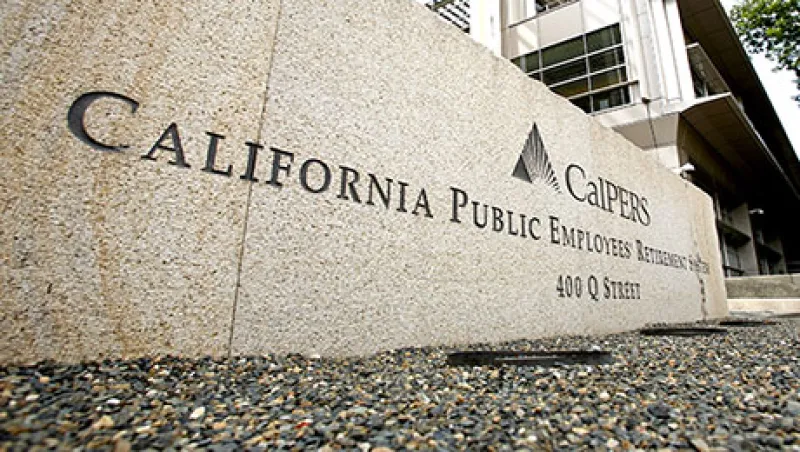A year ago California Governor Jerry Brown was embroiled in a public spat with members of the California Public Employees’ Retirement System board over the pension plan’s discount rate. The pension plan board had moved to lower the rate — the amount of money funds can discount when they calculate their funding status and investment needs because they assume they will be making that capital in the markets — from the current 7.5 percent to 6.5 percent, using a complex strategy that would make the cut over a 20-year period. Brown was pushing for the plan to pull the Band-Aid off at once and lower the rate immediately. The governor, who appoints two members of the 12-person board that oversees CalPERS’s $300 billion pension system, lost that battle when the board voted for its 20-year lowering strategy. Now he looks likely to get a do-over.
At a tense November 15 meeting of the CalPERS Finance and Administration committee, CalPERS’s own staff, as well as two of the fund’s long-time investment consultants, told the board that the assumed rate of return — the rate of return CalPERS expects to make from its investment portfolio over the long term — that the pension system is using for the next ten-year time horizon is too high. Andrew Junkin, president of Wilshire Consulting, CalPERS’s general consultant, told the board his firm was estimating annual pension returns at around 6.2 percent over the next decade, down from a previous 2013 estimate of 7.1 percent. Allan Emkin, a co-founder of Pension Consulting Alliance, also a CalPERS consultant, agreed with Wilshire’s prognosis.
CalPERS CIO Ted Eliopoulos told the board the current investment climate was causing the lowered return expectations, citing low inflation (despite quantitative easing throughout the globe), moderate global growth, and low interest rates. Not content to let his words stand on their own, Eliopoulos also introduced a short video of industry titans, including BlackRock CEO Larry Fink and Berkshire Hathaway CEO Warren Buffett, discussing the slow-growth environment and what kind of return expectations investors should have.
The assumed rate of return CalPERS uses is important because, as a public pension plan, it uses the same rate for the discount rate. A lower discount rate means a lower funding status and would likely require larger contributions from employers and employees. Some stakeholders at CalPERS and other pension plans have been resistant to lower discount rates — arguing that the current low-return climate is an anomaly — because of the repercussions for the plan and its beneficiaries. Governor Brown’s point in 2015 was that the state had, or could budget for, the extra funds. A lower discount rate could also help the governor negotiate with unions in the event that labor wanted to push for more generous retirement benefits.
Speaking at the November 17 committee hearing, Theresa Taylor, an elected CalPERS board member who also serves as vice president and secretary-treasurer of SEIU Local 1000, accused Eliopoulos of seeking to sell the board on “panic and expediency.” She argued that the previous changes — including the plan for lowering the discount rate and reducing risk over 20 years — had yet to take effect. Other union representatives also raised objections, both to the speed at which the rate would be lowered and the assumed need to lower it.
The staff did not come to the committee with a precise recommendation to lower rates, but Eliopoulos suggested they could come back to the committee with one as soon as December. At the end of the session, committee chair Richard Costigan, who was appointed to the CalPERS board by California’s State Personnel Board, requested that staff come back to the committee with a proposal for a workshop at the December meeting. The full CalPERS board could approve a lower rate as soon as February.





